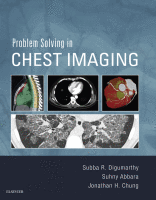Physical Address
304 North Cardinal St.
Dorchester Center, MA 02124

▪ Introduction The focus of this chapter is to define terms used in cardiovascular and thoracic imaging and provide a basic framework for pattern recognition for problem solving in the clinical practice. The thoracic terms used in this book incorporate…

Introduction Historically, radionuclide lung imaging was used mainly for the diagnosis of pulmonary embolism (PE) and lung function. The advent of fluorodeoxyglucose (FDG) positron emission tomography (PET) computed tomography (CT) scanning, with its integration of both functional and anatomic information…

Introduction Radionuclide myocardial perfusion imaging (MPI) plays a key role in the diagnosis and management of individuals with known or suspected coronary artery disease (CAD). Recent breakthroughs in single-photon emission computed tomography (SPECT) technology and software, along with the increasing…

Introduction The bony thoracic cage and crowded vital organs in the thorax make open surgical access difficult and challenging. For these same reasons, the thorax is ideal for image-guided interventions. In addition to procedural skills, a thorough knowledge of the…

■ Introduction Cardiac MRI is a study often used for the evaluation and diagnosis of a wide range of acquired and congenital cardiac abnormalities. Cardiac MRI offers excellent soft tissue contrast that is useful in evaluating cardiac masses and infiltrative…

▪ Introduction and Background: Considerations for Using MRI Magnetic resonance imaging (MRI) is an important tool in imaging the mediastinum, chest wall, and chest vasculature, with a continuously expanding role. Excellent soft tissue contrast makes MRI a useful tool in…

Introduction CT imaging of the heart plays an important role in anatomic and sometimes functional evaluation of the heart and coronary arteries. Coronary artery cardiac CT angiography (CTA) has substantially gained popularity, specifically for imaging acute chest pain in urgent…

Introduction CT has become an indispensable part of diagnostic imaging in recent times. With the help of the money that the Beatles’ records made for Electrical and Music Industries (EMI), Nobel Laureate Sir Godfrey Hounsfield invented CT in 1972, a…

■ Conventional Chest X-Ray The chest radiograph is the most common radiographic procedure performed in the imaging department and is the initial imaging modality in a patient presenting with thoracic symptoms. The basic techniques of chest radiography have not changed…

■ Introduction Heart disease is a leading cause of morbidity and mortality worldwide. Noninvasive imaging plays a role in the diagnosis, monitoring, and treatment of heart disease. Hence, radiologists can increase the clinical utility of their imaging reports and consultations…